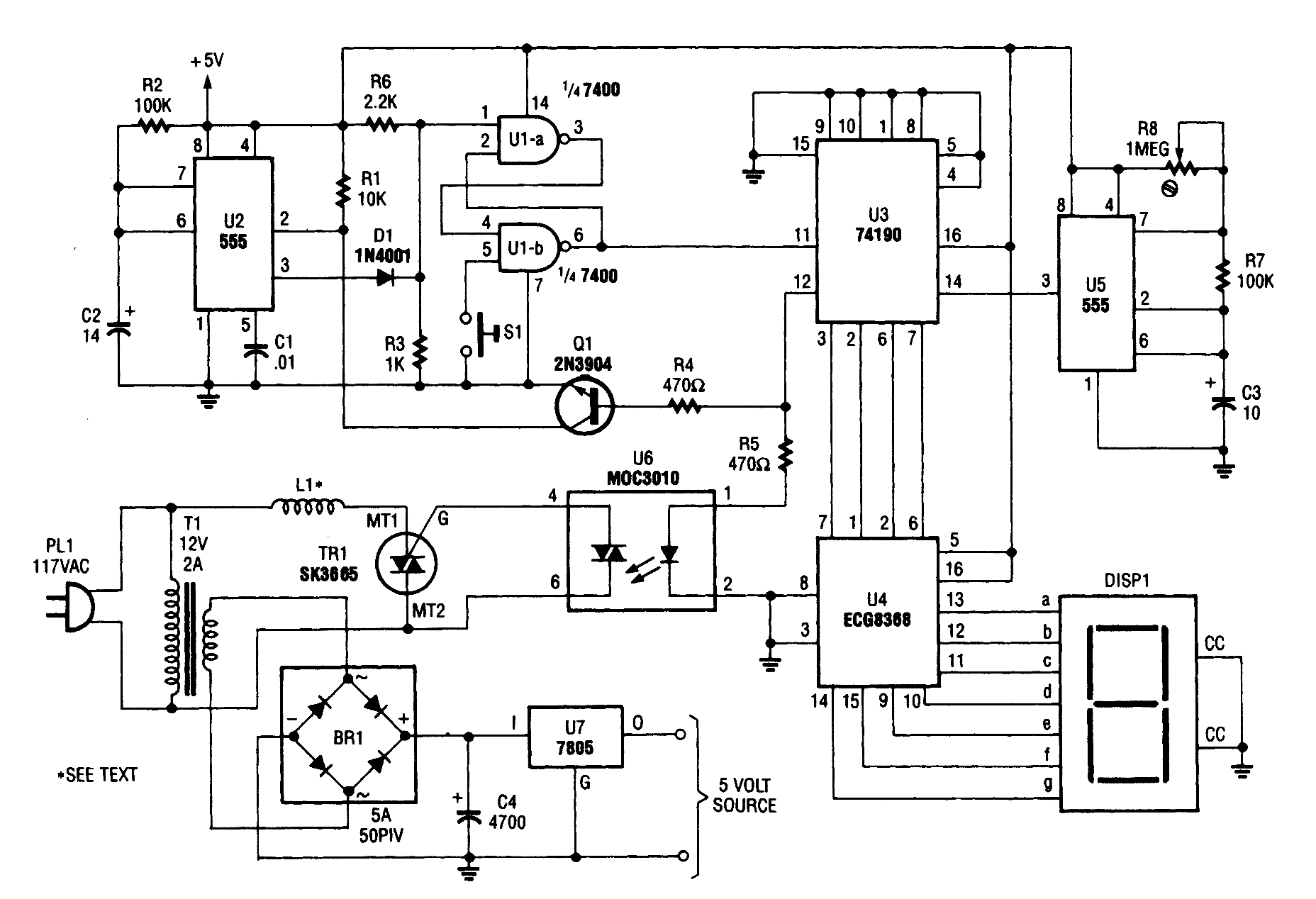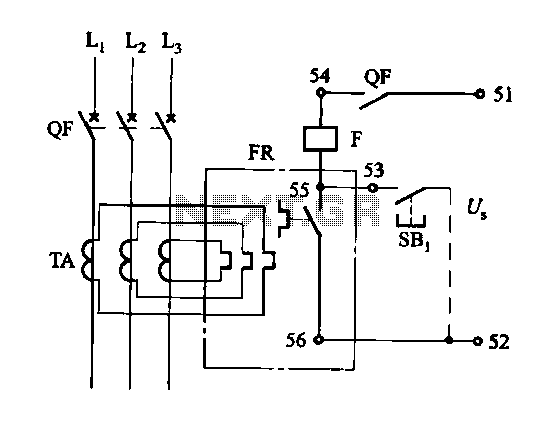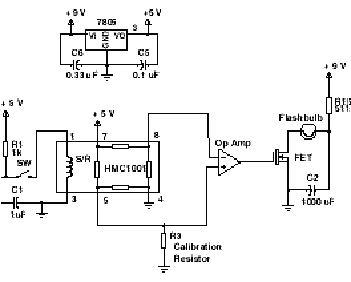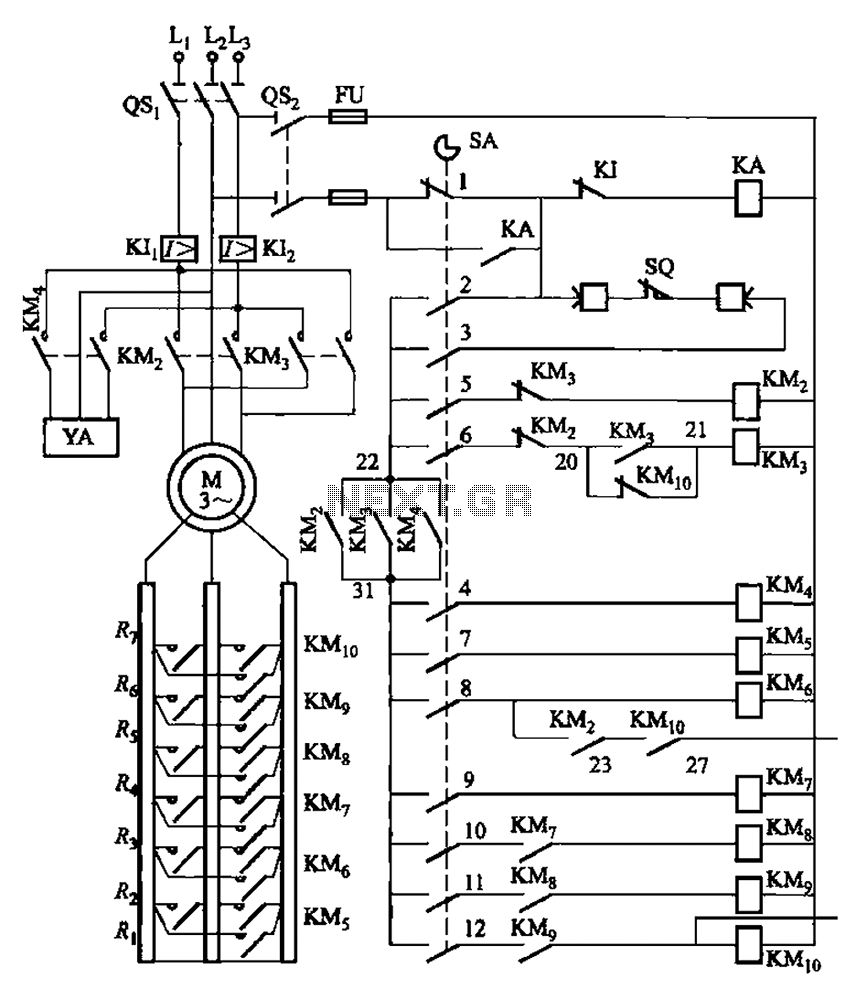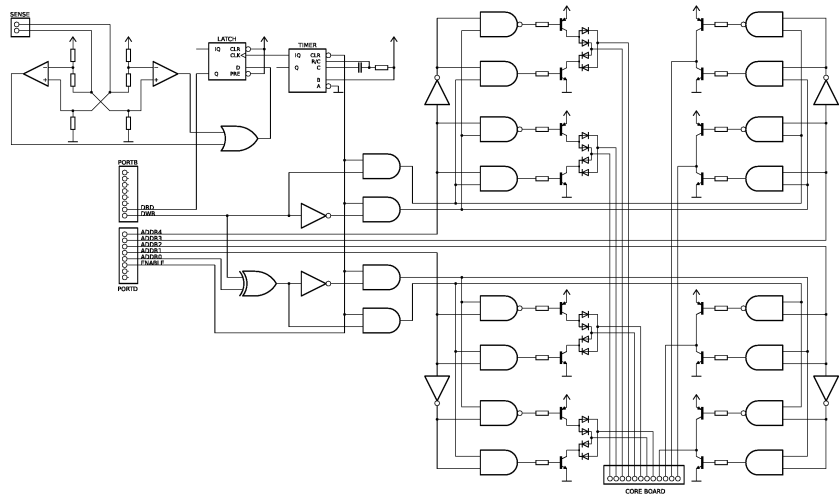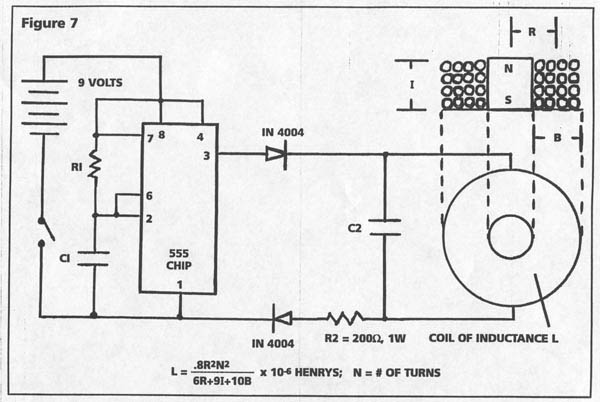
Transcranial magnetic stimulation

Magnetic stimulation is a non-invasive method used to stimulate the brain and peripheral nervous system through induced currents. When targeting the brain, it is commonly referred to as Transcranial Magnetic Stimulation (TMS). The fundamental principle involves a time-varying pulse of current in an external coil, which induces currents in the brain. This technique can serve as an alternative to traditional electrical stimulation of nerves, offering several advantages. Applications include deep peripheral nerve stimulation and non-invasive, painless brain stimulation for eliciting responses and modifying excitability and plasticity.
The concept of electrical stimulation of nerves and muscles dates back to the 1790s when Galvani and Volta first demonstrated it. The mechanism is well understood, involving the depolarization of excitable membranes through current injected into the body via surface or implanted electrodes. This method is widely utilized for both diagnostic and therapeutic purposes. Diagnostic applications include measuring nerve action potential conduction speeds, while therapeutic applications involve stimulating muscles with compromised neural connections to produce functional contractions. Typical pulse parameters for stimulating superficial nerves with surface electrodes are approximately 20 mA for 100 microseconds, requiring up to 250 volts to overcome the high electrical resistance of the skin.
Despite its effectiveness, electrical stimulation has limitations, including potential pain, difficulty in non-invasively stimulating deep structures, and the inaccessibility of the human brain due to the skull's high electrical resistance. An alternative method is to induce currents in the body using time-varying magnetic fields. The principles of electromagnetic induction were first discovered by Michael Faraday in 1831, and early attempts to utilize this for nerve and brain stimulation were made in the early 20th century but were largely unsuccessful due to technological limitations in generating the necessary large and rapidly changing fields.
In 1976, a project began in the U.K. at the Royal Hallamshire Hospital and University of Sheffield aimed at stimulating nerves using currents induced by short-duration magnetic field pulses. This research led to the first report of supramaximal stimulation of peripheral nerves in 1982. The Sheffield group later demonstrated Transcranial Magnetic Stimulation in 1985, sparking widespread interest in the technique, which has since gained acceptance with various diagnostic and therapeutic applications, and commercial stimulators are now available from multiple manufacturers.
Magnetic stimulation employs brief, intense magnetic field pulses to induce electric fields and currents in the body, proportional to the rate of change of the magnetic field (dB/dt). If these currents are of suitable amplitude, duration, and orientation, they can stimulate excitable structures through the same mechanism as currents injected via electrodes. Thus, although termed magnetic stimulation, the underlying neural mechanism is electrical, making the term a convenient shorthand. The primary advantage of magnetic stimulation over electrical stimulation is its ability to non-invasively stimulate the human brain and deep peripheral nerves without inducing pain.Magnetic stimulation is a non-invasive method of stimulating the brain and peripheral nervous system using induced currents. When used to stimulate the brain it is normally referred to as Transcranial Magnetic Stimulation or TMS.
The basic principle is shown schematically in figure 1. Figure 1: The basic principle of transcranial magnetic stimulation showing a time-varying pulse of current in an external coil causing inducing currents in the brain Magnetic stimulation can be used as an alternative to conventional electrical stimulation of nerves in some applications because it has a number of advantages which are discussed later. Applications include deep peripheral nerve stimulation and the non-invasive and painless stimulation of the human brain, both to elicit responses directly and to modify excitability and plasticity.
Electrical stimulation of nerves and muscles was first shown by Galvani and Volta in the 1790s and its mechanism is now well understood1. Such stimulation, whereby excitable membranes are depolarised using current injected into the body via surface or implanted electrodes, is today widely used in both diagnosis and therapy.
Examples of the former include measuring the speed of conduction of nerve action potentials in health and disease, and of the latter to stimulate muscles whose neural connections have been compromised to produce functionally useful contractions. Typical pulse parameters used to stimulate superficial nerves via surface electrodes are of the order of 20mA for 100 sec, with up to 250 volts needed to drive this current through the relatively high electrical resistance of the skin.
Whilst very effective in many applications, electrical stimulation has some disadvantages. It can sometimes be painful, it is difficult to stimulate deep structures non-invasively, and the human brain is relatively inaccessible because of the high electrical resistance of the skull. An alternative approach is to induce current in the body using time-varying magnetic fields. The underlying principles of electromagnetic induction were first discovered by Michael Faraday in 1831 and there were a number of attempts to utilise it to stimulate nerves and the brain around the turn of the 20th century (figure 2).
These early attempts were largely unsuccessful, because the technology was not available to generate the large and rapidly changing fields which are necessary. In 1976 a programme of work was started in the U. K. at the Royal Hallamshire Hospital and University of Sheffield with the specific goal of stimulating nerves using currents induced by short duration magnetic field pulses such that the resultant electrophysiological response could be recorded.
This led, in 1982 to supramaximal stimulation of peripheral nerves being reported2. However it was not until the Sheffield group extended their work with the first demonstration of Transcranial Magnetic Stimulation in 1985 (figure 3)3 that there was widespread interest in the technique. It has since become widely established with a range of applications in both diagnosis and therapy, and commercial stimulators are available from several manufacturers.
Magnetic stimulation uses a brief but intense magnetic field pulse to induce electric fields, and hence currents, in the body which are proportional to the rate of change of magnetic field (dB/dt). If these currents are of appropriate amplitude, duration and orientation they will stimulate excitable structures by exactly the same mechanism as currents injected into the body using implanted or surface electrodes.
Hence magnetic` stimulation is something of a misnomer - the mechanism at the neural level is in fact electrical but it is a convenient shorthand to describe the method. Magnetic stimulation has the major advantage over electrical stimulation of being able to stimulate the human brain and deep peripheral nerves without causing pain.
The skull presen 🔗 External reference
The concept of electrical stimulation of nerves and muscles dates back to the 1790s when Galvani and Volta first demonstrated it. The mechanism is well understood, involving the depolarization of excitable membranes through current injected into the body via surface or implanted electrodes. This method is widely utilized for both diagnostic and therapeutic purposes. Diagnostic applications include measuring nerve action potential conduction speeds, while therapeutic applications involve stimulating muscles with compromised neural connections to produce functional contractions. Typical pulse parameters for stimulating superficial nerves with surface electrodes are approximately 20 mA for 100 microseconds, requiring up to 250 volts to overcome the high electrical resistance of the skin.
Despite its effectiveness, electrical stimulation has limitations, including potential pain, difficulty in non-invasively stimulating deep structures, and the inaccessibility of the human brain due to the skull's high electrical resistance. An alternative method is to induce currents in the body using time-varying magnetic fields. The principles of electromagnetic induction were first discovered by Michael Faraday in 1831, and early attempts to utilize this for nerve and brain stimulation were made in the early 20th century but were largely unsuccessful due to technological limitations in generating the necessary large and rapidly changing fields.
In 1976, a project began in the U.K. at the Royal Hallamshire Hospital and University of Sheffield aimed at stimulating nerves using currents induced by short-duration magnetic field pulses. This research led to the first report of supramaximal stimulation of peripheral nerves in 1982. The Sheffield group later demonstrated Transcranial Magnetic Stimulation in 1985, sparking widespread interest in the technique, which has since gained acceptance with various diagnostic and therapeutic applications, and commercial stimulators are now available from multiple manufacturers.
Magnetic stimulation employs brief, intense magnetic field pulses to induce electric fields and currents in the body, proportional to the rate of change of the magnetic field (dB/dt). If these currents are of suitable amplitude, duration, and orientation, they can stimulate excitable structures through the same mechanism as currents injected via electrodes. Thus, although termed magnetic stimulation, the underlying neural mechanism is electrical, making the term a convenient shorthand. The primary advantage of magnetic stimulation over electrical stimulation is its ability to non-invasively stimulate the human brain and deep peripheral nerves without inducing pain.Magnetic stimulation is a non-invasive method of stimulating the brain and peripheral nervous system using induced currents. When used to stimulate the brain it is normally referred to as Transcranial Magnetic Stimulation or TMS.
The basic principle is shown schematically in figure 1. Figure 1: The basic principle of transcranial magnetic stimulation showing a time-varying pulse of current in an external coil causing inducing currents in the brain Magnetic stimulation can be used as an alternative to conventional electrical stimulation of nerves in some applications because it has a number of advantages which are discussed later. Applications include deep peripheral nerve stimulation and the non-invasive and painless stimulation of the human brain, both to elicit responses directly and to modify excitability and plasticity.
Electrical stimulation of nerves and muscles was first shown by Galvani and Volta in the 1790s and its mechanism is now well understood1. Such stimulation, whereby excitable membranes are depolarised using current injected into the body via surface or implanted electrodes, is today widely used in both diagnosis and therapy.
Examples of the former include measuring the speed of conduction of nerve action potentials in health and disease, and of the latter to stimulate muscles whose neural connections have been compromised to produce functionally useful contractions. Typical pulse parameters used to stimulate superficial nerves via surface electrodes are of the order of 20mA for 100 sec, with up to 250 volts needed to drive this current through the relatively high electrical resistance of the skin.
Whilst very effective in many applications, electrical stimulation has some disadvantages. It can sometimes be painful, it is difficult to stimulate deep structures non-invasively, and the human brain is relatively inaccessible because of the high electrical resistance of the skull. An alternative approach is to induce current in the body using time-varying magnetic fields. The underlying principles of electromagnetic induction were first discovered by Michael Faraday in 1831 and there were a number of attempts to utilise it to stimulate nerves and the brain around the turn of the 20th century (figure 2).
These early attempts were largely unsuccessful, because the technology was not available to generate the large and rapidly changing fields which are necessary. In 1976 a programme of work was started in the U. K. at the Royal Hallamshire Hospital and University of Sheffield with the specific goal of stimulating nerves using currents induced by short duration magnetic field pulses such that the resultant electrophysiological response could be recorded.
This led, in 1982 to supramaximal stimulation of peripheral nerves being reported2. However it was not until the Sheffield group extended their work with the first demonstration of Transcranial Magnetic Stimulation in 1985 (figure 3)3 that there was widespread interest in the technique. It has since become widely established with a range of applications in both diagnosis and therapy, and commercial stimulators are available from several manufacturers.
Magnetic stimulation uses a brief but intense magnetic field pulse to induce electric fields, and hence currents, in the body which are proportional to the rate of change of magnetic field (dB/dt). If these currents are of appropriate amplitude, duration and orientation they will stimulate excitable structures by exactly the same mechanism as currents injected into the body using implanted or surface electrodes.
Hence magnetic` stimulation is something of a misnomer - the mechanism at the neural level is in fact electrical but it is a convenient shorthand to describe the method. Magnetic stimulation has the major advantage over electrical stimulation of being able to stimulate the human brain and deep peripheral nerves without causing pain.
The skull presen 🔗 External reference
